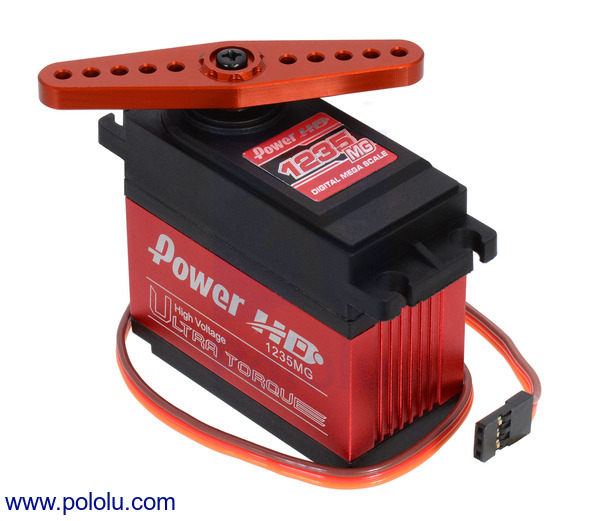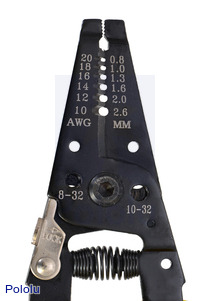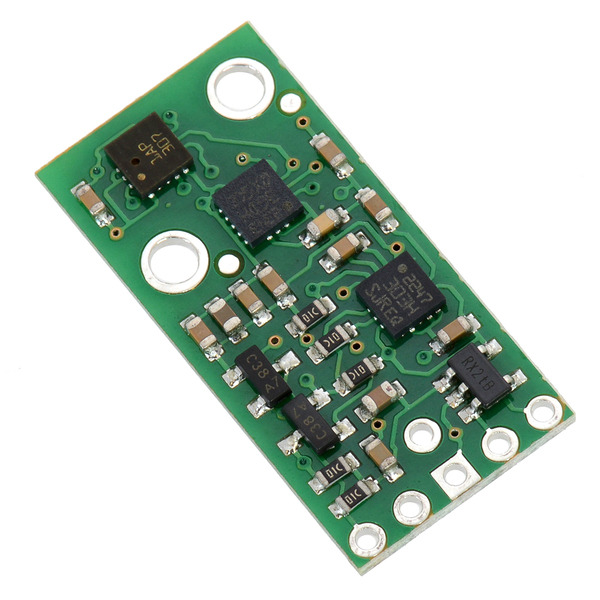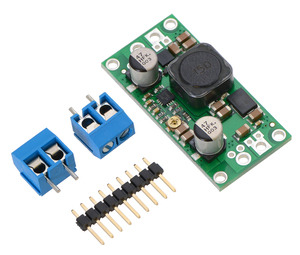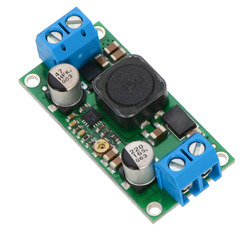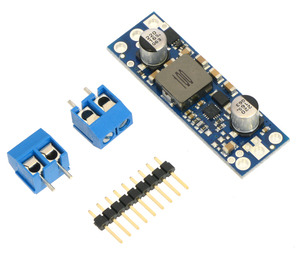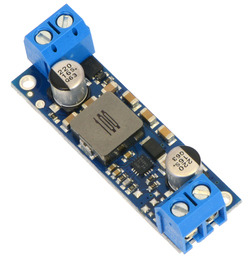Pololu Blog » User Profile: Ben » Posts by Ben »
Posts by Ben (Page 15)
You are currently viewing a selection of posts from the Pololu Blog. You can also view all the posts.
Popular tags: community projects new products raspberry pi arduino more…
New product: Metal servo horn for HD-1235MG giant servos
We are now carrying metal servo horns that work with Power HD’s ultra-high-torque HD-1235MG giant servos, which can deliver a whopping 560 oz-in (40 kg-cm) at 7.4 V. If you want to get the most power out of your HD-1235MG, I recommend substituting one of these anodized aluminum horns for the included plastic horns.
 |
Free magazines: May 2014 Circuit Cellar and Elektor
|
|
Get FREE copies of Circuit Cellar magazine’s May issue and Elektor magazine’s May issue with your order, while supplies last. To get your free issues, enter the coupon codes CIRCUIT0514 and ELEKTOR0514 into your shopping cart. The magazines will add 6 ounces and 7 ounces, respectively, to the package weight when calculating your shipping options.
For back issues and more information, see our free Circuit Cellar magazine offers and free Elektor magazine offers.
New products: 10-20 AWG and 20-30 AWG wire strippers
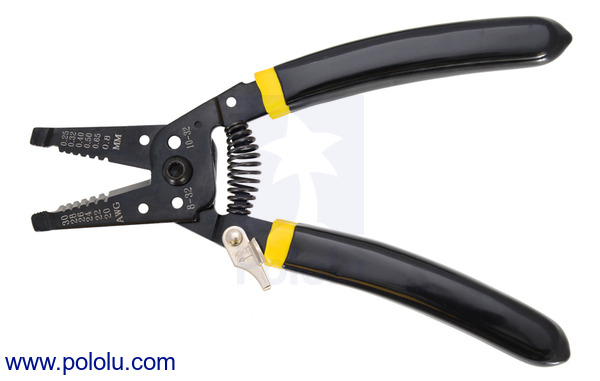 |
Inevitably, if you work with electronics long enough, you will encounter a wire that is too long, too insulated, or too connected (to the wrong thing), and while you might be able to MacGyver your way out of the situation with a pair of scissors or a suitably hardy set of teeth, nothing beats a good wire stripper. With that in mind, we set off in search of some good, basic wire strippers that would get the job done well without breaking the bank. Our favorites were a set of multi-purpose wire strippers and cutters that feature comfortably curved and cushioned grips and a nose that can be used as pliers. One version works with 10 to 20 AWG wires and another works with 20 to 30 AWG wires. (The stripping holes are labeled with the gauge of solid-core wire for which they are intended; for stranded wire, use the next larger hole.)
|
|
Free Circuit Cellar magazine April 2014
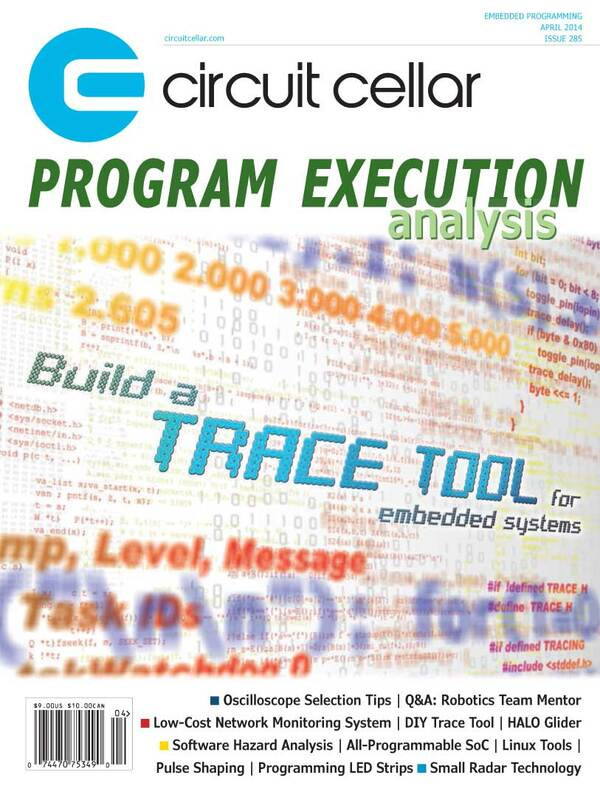 |
Get a FREE copy of Circuit Cellar magazine’s April issue with your order while supplies last. To get your free issue, enter the coupon code CIRCUIT0414 into your shopping cart. The magazine will add 6 ounces to the package weight when calculating your shipping options.
For other issues and more information, see our Free Circuit Cellar Magazine Offers page. All issues are now available for shipping worldwide!
Free Elektor magazine April 2014
Get a FREE copy of Elektor magazine’s April issue with your order while supplies last. To get your free issue, enter the coupon code ELEKTOR0414 into your shopping cart. The magazine will add 7 ounces to the package weight when calculating your shipping options.
For other issues and more information, see our Free Elektor Magazine Offers page. All issues are now available for shipping worldwide!
New products: MinIMU-9 and AltIMU-10 v3
We are happy to introduce new v3 versions of our MinIMU-9 and AltIMU-10 inertial measurement units (IMUs). These sensor modules are the same compact sizes as their predecessors and have same pin-out, but they are based on ST’s newer and better L3GD20H 3-axis gyro and LSM303D 3-axis accelerometer/magnetometer. The nine independent rotation, acceleration, and magnetic measurements from these sensors provide all of the information required make an attitude and heading reference system (AHRS). In addition to this, the AltIMU-10 v3 incorporates an LPS331AP digital barometer that can be used to measure pressure and altitude.
 |
The new revisions offer a wider magnetic sensing range and a more accurate and stable gyro, all with lower power consumption, and they include an extra pin for changing the I²C slave addresses so that two boards can be used on the same I²C bus. They should generally be usable as drop-in replacements for our previous MinIMU-9 v2 and AltIMU-10 modules—which we have put on clearance—though changes to register locations might require updates to software that is not based on our Arduino libraries.
We also have individual carrier boards available for the L3GD20H gyro, LSM303D accelerometer/magnetometer, and LPS331AP barometer if your application doesn’t require quite so much data or if you want to build your own AHRS unit.
Free Elektor magazine March 2014
 |
Get a FREE copy of Elektor magazine’s March issue with your order while supplies last. To get your free issue, enter the coupon code ELEKTOR0314 into your shopping cart. The magazine will add 6 ounces to the package weight when calculating your shipping options.
For other issues and more information, see our Free Elektor Magazine Offers page. All issues are now available for shipping worldwide!
New short-range analog Sharp distance sensor
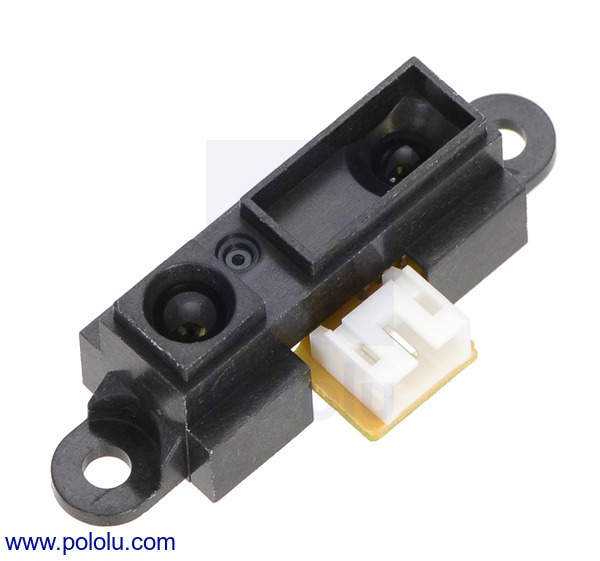 |
After having been out of the short-range Sharp GP2D120XJ00F analog distance sensor for a while, we are happy to have a higher-performance replacement: the Sharp GP2Y0A41SK0F analog distance sensor. The newer GP2Y0A41SK0F has the same physical dimensions, pinout, and 4 cm to 30 cm operating range as the original GP2D120XJ00F, but it offers a much higher update rate and lower average current draw. This sensor is an inexpensive and easy way to add close-proximity rangefinding or obstacle detection to your electronics or robotics project.
For longer-range analog rangefinders and shorter-range digital distance sensors, check out our full selection of optical rangefinders.
Powerful new S18v20x step-up/step-down regulators
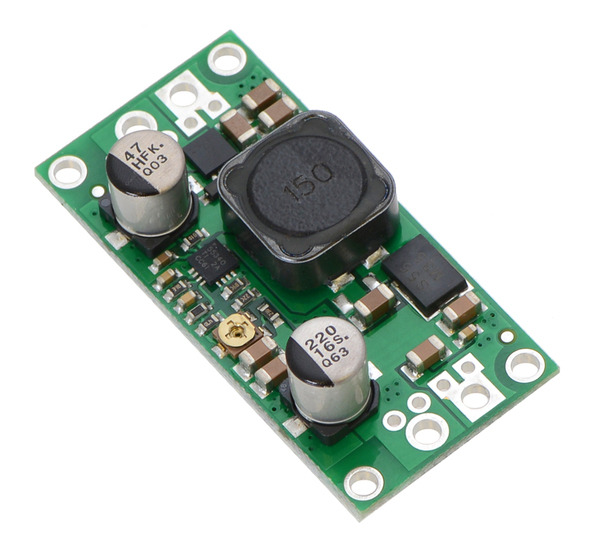 |
Earlier this month we introduced our new line of powerful U3V50x boost regulators; now we have a similarly powerful family of S18V20x step-up/step-down voltage regulators to go along with them! We are especially excited about these regulators, which have a wide 3 V to 30 V input voltage range, typical efficiency of 80% to 90%, and maximum output current of approximately 2 A when the input voltage is near the output voltage.
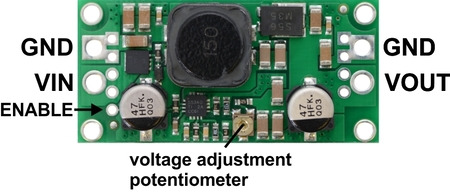 |
Step-up/step-down regulators like the S18V20x work with input voltages that are less than, equal to, or greater than the output voltage. This makes them especially well suited for battery-powered applications where the nominal battery voltage is close to the desired output voltage, and the actual battery voltage transitions from above the output to below as the battery discharges. For example, these regulators make it possible to get a steady 12V from a 12V battery or a steady 6V from five NiMH cells, which can be over 7 V when fully charged and below 5 V when drained. These regulators are also great for applications where having a very wide operating voltage range is desirable, such as projects where you want a lot of flexibility in power supply choice or in systems powered by alternative energy sources like solar or wind, where the output voltage can vary greatly.
The S18V20x family includes versions with fixed 5 V, 6 V, 9 V, or 12 V outputs and versions with adjustable 4 V to 12 V or 9 V to 30 V outputs. All of them feature built-in reverse-voltage protection, over-current protection, thermal shutdown, and an under-voltage lockout that keeps the modules from behaving erratically when the input voltage gets too low.
|
|
The compact boards (0.825″ × 1.7″) have four mounting holes for #2 or M2 screws and can be assembled with the included 5mm-pitch terminal blocks or 0.1″ header pins.
For other regulator options, you can take a look at our full selection of step-up/step-down regulators, step-up voltage regulators, and step-down voltage regulators.
Powerful new U3V50x boost regulators
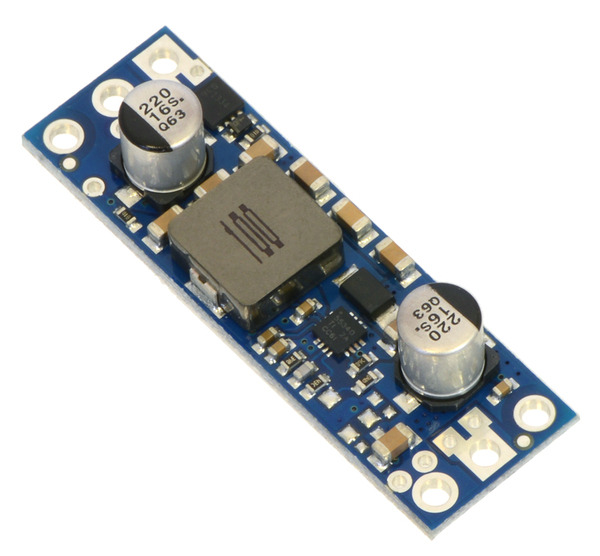 |
Ever since the release of our original adjustable boost regulators, customers have been requesting higher-power versions. Doing power systems right is not easy, and minute differences in component choices and layout can make a huge difference in performance: we went through three different failed designs before arriving at our new U3V50x family of step-up voltage regulators, which we think offers a great balance of size, performance, and price.
 |
These new boost regulators can generate up to 30 V from input voltages as low as 2.9 V while allowing for input currents as high as 5 A and offering typical efficiencies of 80% to 95%, making these our most powerful boost regulators. The regulators include built-in reverse-voltage protection, over-current protection, thermal shutdown, and an under-voltage lockout that keeps the modules from behaving erratically when the input voltage gets too low. The U3V50x family includes versions with fixed 5 V, 6 V, 9 V, 12 V, or 24 V outputs and versions with adjustable 4 V to 12 V or 9 V to 30 V outputs.
|
|
The compact boards (0.6″ × 1.9″) have two mounting holes and can be assembled with the included 5mm-pitch terminal blocks or 0.1″ header pins.
 |
For other regulator options, you can take a look at our full selection of step-up voltage regulators, step-down voltage regulators, and step-up/step-down regulators.
